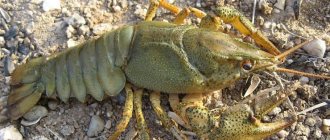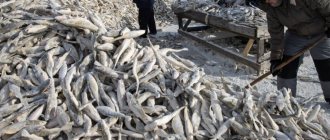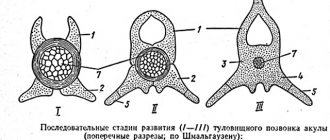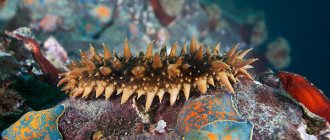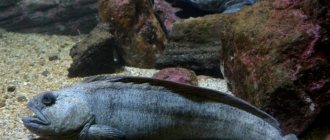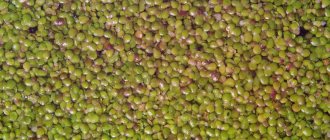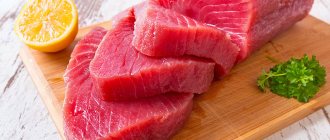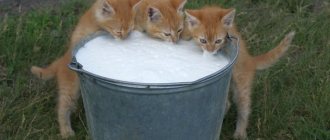The mussel clam is a bivalve edible shellfish that lives in the depths of oceans and seas, as well as freshwater rivers and lakes.
There are more than twenty thousand species of these invertebrates, but only a few (belonging to the class Mytilus, Perna, Crenomytilus) are the most important objects of fishing and consumption. Do you like mussels?
- Yes 89%, 2265 votes
2265 votes 89%2265 votes - 89% of all votes
- No 6%, 154 votes
154 votes 6%
154 votes - 6% of all votes
- I don't eat seafood 5%, 139 votes
139 votes 5%
139 votes - 5% of all votes
Total votes: 2558
08.10.2019
- Yes 89%, 2265 votes
2265 votes 89%2265 votes - 89% of all votes
- No 6%, 154 votes
154 votes 6%
154 votes - 6% of all votes
- I don't eat seafood 5%, 139 votes
139 votes 5%
139 votes - 5% of all votes
Total votes: 2558
08.10.2019
×
You or from your IP have already voted.
Demand on the global seafood market exceeds supply. That is why the number of aquaholdings (seaside farms) whose activities are related to the cultivation of this delicacy is growing. Let's get acquainted with seafood, find out what sea mussels are.
Habitat conditions for mussels
In shallow salty sea water, mussels are attached to underwater reefs, breakwaters, and rocks using byssal threads. The structure of the shells, great strength, and streamlined shape provide an excellent opportunity for their habitat in the surf zone with fast currents.
The lifespan of mussels living in different conditions is different. The Black Sea mussels live for about 5 years, the northern ones – 10. The real long-livers are the Pacific mussels, which live for three decades.
Mussels are absolutely unpretentious creatures:
- their food is unicellular algae, phytoplankton, bacteria;
- nutrition enters the body as a result of filtration of sea water;
- in a small area they form settlements of many thousands - mussel banks;
- The infancy of mussels passes among plankton, and when the eggs become larvae and become overgrown with shells, they stick to rocks, stones and any other hard surfaces.
How to cook and how to eat
You should begin culinary sacraments no later than 36 hours after purchase. The preparatory stage necessarily includes opening the valves, removing the mollusk and washing it in water.
Culinary experts declare the complete versatility of the delicacy. Shellfish can be:
- fry in a frying pan;
- bake on the grill, in the oven, on the charcoal grill;
- boil in vegetable broth, wine, water with spices;
- marinate;
- stew;
- smoke;
- steam.
You can cook either shellfish extracted from the shells or directly in the shells. You need to understand: byssus is inedible. Gourmets recommend lemon juice, salad greens, light beer or white wine with shellfish. Grape juice is perfect for non-drinkers and children.
The eating process itself depends on the presentation format. Live mussels, fried on skewers, are eaten “hand-held” or removed with a fork. If the clams “float” in the shells in the soup, you will need tongs and a special fork for consumption. It is customary to pour lemon over an open shell and, bringing the shell to your mouth, silently suck in the delicious meat and juice. Special mollusk tools can be seen in the photograph:
There is also special table etiquette: when serving mussels, you will need a bowl of lemon water, a towel (to wipe your hands) and a separate plate for empty shells.
Mussels: external structure
Mussels are bivalve mollusks. The light yellow or blue-black shell of the adult mollusk, covering the elongated body, has a wedge shape and a smooth surface with thin growth lines. The shape of the shell is determined by the species and subspecies of the mollusk.
The external structure of the mussel has distinctive features:
- the symmetrical left and right valves are attached by muscular tissue and a flexible ligament;
- the valves close very tightly as a result of contraction of the adductor muscle and protect the body of the mollusk from any external influence;
- the top of the shell is closer to the front edge - this creates the recognizable appearance of a mussel;
- the outer surface of the shell has a calcareous composition and a dark color;
- The inside of the shell has a layer of mother-of-pearl - hypostracum.
A grain of sand trapped in the space between the valve and the mantle is gradually enveloped in nacre - this is how pearls are formed.
How to choose
Despite the apparent simplicity and unpretentiousness of this seafood, the world has long developed strict rules and recommendations for choosing a product:
- The main thing in casting: integrity control. Each mollusk valve must not have deformations, damage, scratches or cracks. Particular attention should be paid to the closedness of the shells: slightly opened mussels are poorly (short-lived) stored;
- a good indicator of the freshness of the product is the characteristic click when opening the shell (when purchasing freshly caught shellfish). The silently opening shell is spoiled (expired);
- Frozen shellfish should not stick together into a solid shell of ice. Excess freezing often hides logistics and storage problems;
- The body color of the mollusk should be white, cream or orange. Any deviations in color (darkening, spotting, etc.) mean the product is not fresh. Quality delicacies look beautiful;
- the flap delicacy can smell only of the sea or iodine. Any other odors and fragrances are a signal to refuse the purchase;
- Excessively heavy mussels should be treated with suspicion: there may be sand inside the shell;
- There are several types of mussels available on the market: frozen, canned, fresh. In order not to spoil the gastronomic euphoria, you should take product casting seriously. Visit only reputable retail outlets, check the expiration dates indicated on the packaging, and refuse to purchase at the slightest doubt.
Mussels: internal structure
A mussel is a mollusk whose structure is as follows:
- The body is formed from a torso and legs, deprived of motor function due to the sedentary lifestyle of the mollusk.
- The head is absent, and there are no digestive organs such as salivary glands, jaws, or pharynx.
- The mouth is located at the base of the leg and connects to a short esophagus that opens into the stomach.
- The glands secrete byssus - strong threads of protein origin, which are necessary for anchoring at the bottom of the reservoir.
- The body is covered by a mantle, falling in loose folds on the sides and merging at the back. Siphons are formed here, that is, food and air tubes.
- The internal structure of the mussel determines the respiratory system and nutritional system.
- Mollusks breathe using gills located under the mantle and acting as a filter that pumps up to 70 liters of sea water per day. There are many cilia on the gills; due to their work, water passes through the body, delivering nutritional microorganisms to the oral lobes.
- Inedible particles, as well as excrement, are removed thanks to the mussel's excretory siphon.
- The structure of the heart is represented by two atria and one ventricle, from which two aortas arise, dividing into several arteries.
- The circulatory system is not closed.
- The nervous system is represented by nerve ganglia, which are connected to each other by nerve trunks.
- The tactile organs are represented by oral lobes and tactile cells located along the edge of the mantle, in the lamellar gills and leg.
Benefits and harms
It is quite possible to consider mussel meat as a therapeutic and prophylactic agent. Marine diets based on strong proteins, iodine and PUFAs are in demand and popular in the world.
Systemic consumption of edible shell rock improves brain function and restores visual acuity. Seafood is an excellent antioxidant: the cobalt contained in mussels is several times more effective than its counterparts in pork, beef and chicken liver.
An indisputable fact is the statement that eating mussels reduces the risk of cancer. Clinical trials have proven the ability of mussels to resist arthritis and increase the body's immune defense.
Speaking about the dietary talents of this seafood delicacy, we can safely say that the product is healthy:
- to improve metabolism;
- stimulating hematopoietic processes;
- increasing overall tone.
Nutritionists recommend including this delicacy in your diet:
- for the formation of diets that reduce excess weight;
- during pregnancy and feeding;
- for children and senior citizens;
- for blood diseases;
- to relieve excessive radiation exposure;
- for digestive problems (complex metabolism).
Every coin has a downside. Mussels are dangerous for gout: seafood is rich in protein compounds that convert into uric acid (crystals that cause joint pain). Mussels are strong allergens: an excess of iodine and active proteins can provoke a negative reaction. Individual intolerance to the delicacy product cannot be ruled out.
Valves are strictly contraindicated for patients with bleeding disorders. You need to avoid common food poisoning: strictly follow the casting rules when purchasing and recommendations for kitchen processing.
Mussels: use
Mussels are used in different areas of life. The structure of beautiful shells makes sea creatures almost indispensable in the manufacture of souvenirs and decorations. The mother-of-pearl layer gives a special decorative effect to the products.
At the same time, mussels are a real find for true connoisseurs of seafood delicacies. Residents of sea coasts have been familiar with the special ritual of preparing mussels since childhood: they are collected from the seabed, cleaned and boiled right on the shore. On an industrial scale, mollusks are caught by dredges, which scrape everything from the bottom of the sea for subsequent sorting of what is caught.
Mussels, which have a delicate delicate taste, can decorate any feast: they are fried, boiled, smoked, pickled and even eaten alive.
Main views with photos
Mussels used in cooking differ in size (from five to twenty centimeters), the color of the shells, life expectancy (from 5 to 30 years), and even taste. Black Sea and Mediterranean types of mussels are more tender and softer, while Far Eastern seafood is coarser and more aromatic (lower in class).
Expert assessment: chefs of the best European restaurants consider the most refined and marine taste of mussels grown on ocean plantations in Chile.
These are real conveyor factories: production is shown in the photo:
The world cuisine of seafood delicacies distinguishes three main types of edible shell rock.
Black Sea mussels are small representatives of the Mytilidae family. There are extensive settlements (they are called mussel drusen) of this invertebrate in the shallow waters of the Atlantic, Indian and Pacific Oceans, but the largest areas of the Black Sea are located in the Black and Mediterranean Seas.
In addition to its natural habitats, the Black Sea mussel is bred en masse on special plantations around the world. In Crimean resorts, this subspecies is a kind of symbol, an icon of the style of beach snacks.
The edible mussel (category Mytilus edulis) lives in the littoral zone (rocks, sand, silt) of the coast of Europe, the coast of Greenland, the Atlantic coast of North America and the coast of Japan. Unlike other mollusks, the edible species of mussels easily tolerates fluctuations in temperature and salinity. However, with constant low salinity (as in the Baltic Sea), shell rock grows more slowly and becomes smaller.
Gray's clam, or giant mussel (Crenomytilus grayanus) is a species of bivalve shellfish of the family Mytilidae. These large shells have perfectly settled in the shallow coastal areas of the Seas of Japan and Okhotsk.
Some large individuals can exceed 21 cm (the weight of the mollusk with shell is 1.6 kilograms). Like most members of the family, the apex of the Gray mussel shell is shifted towards the front (typical triangular-oval format).
Chemical composition
Nutritionists around the world characterize mussel meat as a source of high-quality, strong proteins. There are very few carbohydrates and fats in this seafood delicacy, but the quantity and quality of protein (according to experts) “puts on the shoulder” even such a “protein monster” as chicken eggs (and this happens in nature).
Nutritionist's recommendation: athletes who are gaining muscle mass and patients in rehabilitation clinics simply need to include shellfish meat in their diet. Strong proteins are excellent building materials.
Continuing to study the beneficial properties of mussel meat, it is simply impossible to avoid taurine and arginine, which are known to the world as powerful natural aphrodisiacs. Eating mussels significantly increases the production of hormones responsible for sexual desire and strength.
The composition of mineral elements in edible shell rock is minimal, but their concentration is quite high:
- calcium for healthy joints and bones;
- magnesium for protein synthesis and proper glucose processing;
- manganese, which carries out cholesterol metabolism;
- boron, which prevents premature aging;
- potassium and phosphorus, which improve the condition of hair and nails;
- cobalt for hematopoiesis;
- sodium as an alkaline cation;
- iodine for smooth functioning of the thyroid gland;
- iron for oxygen transport throughout the body.
Shells are rich in a variety of vitamins: A, B1, B2, B6, B12, E, D3, C and PP.
Nutritional value and calorie content
The nutritional value of one hundred grams of boiled shellfish meat is only 77 kcal. This is the main dietary value: excellent nutritional value with a minimum of calories.
BZHU layout 10% / 134% / 17%.
- prevailing easily digestible protein - 12 g (∼ 8 kcal);
- polyunsaturated fatty acids - 2 g (∼ 103.5 kcal);
- carbohydrates - 3.3 g (∼ 13.2 kcal).
The composition contains a lot of water: 83 grams.
Please note: shellfish meat contains cholesterol (40 mg).
Biological role
Shellfish are a biological filter, helping to purify water, and a link in the food chain - fish and mammals feed on them.
Shellfish are also important in human life:
- are a source of mother-of-pearl and pearls used in the jewelry industry;
- contain nutritious animal protein for human consumption.
The best varieties of mother of pearl are obtained from the thick walls of the pearl oyster. Special shellfish farms are created for restaurants, where mussels and oysters are grown.
Source: obrazovaka.ru
Notes
- ↑
Katolikova M.V., Laius D.L., Strelkov P.P., Hummel G. (2000).
Fluctuating asymmetry of mussels of the genus Mytilus
(Mollusca, Bivalvia): experience of geographical analysis. Bulletin of St. Petersburg University, series 3, issue 2 (No. 11), pp. 78-83.
| This article lacks links to sources of information. Information must be verifiable, otherwise it may be questioned and deleted. You can edit this article, adding links to authoritative sources. This mark is set May 13, 2011 . |
Sanitary control
Before entering the market, careful sanitary control is carried out for pathogenic microflora. In cases where bacterial contamination is higher than normal, mussels are placed in special pools with running water in order to remove remnants of undigested food and bacterial microflora.
Based on the developed instructions, pilot production of mussels began in the Kerch Strait in 1983. At the end of March - beginning of April, 130 carrier-collectors of three types were installed on an area of over 2 hectares:
- linear,
- continuous,
- rod-shaped
Massive settling of larvae on collectors was discovered in May. Depending on the design features and location of the collectors, the spat density ranged from 3 to 30 thousand. In autumn, in October, fingerlings were mainly represented by a modal group with a length of 21-30 mm, as well as a small number of mollusks of different sizes. Depending on the density in the reservoirs, the average sizes of juveniles ranged from 18-33 mm (the average for the total sample was 24 mm). The yield of raw meat was 30-44% for the group with a length of 21-30 mm and 31-39% for mussels with a size of 31-40 mm (with an average weight of one specimen of 1.6 and 3.1 g, respectively). The biomass of fingerlings on carriers varied from 210 to 980 kg.
Due to the low water temperature in the winter and partly in the spring of 1983-1984. the linear growth of mollusks stopped, and almost until April their average sizes remained the same as in November-December. In April-May, the growth rate increased slightly and at the end of May up to 60% of individuals were represented by a group measuring 40-50 mm. Harvest is scheduled for September, when most of the mussels reach a length of more than 50 mm.
Thus, we can say quite definitely that the time has come to more actively implement the results of scientific developments into practice and begin to create industrial farms for growing mussels. To do this, it is necessary to resolve a number of organizational issues: set purchasing prices; create processing shops and enterprises near mariculture farms. To improve the industrial biotechnology of mussel cultivation, it is necessary to investigate as quickly as possible such issues as the possibility of regulating the number of mussels on collectors, since their growth rate largely depends on the density of mollusks per unit area of the collector; justify the optimal number of speakers of different types for each specific area. On this basis, it is necessary to develop biotechnology for the rational operation of farms and clarify the optimal standards for growing mussels, study the possibility of obtaining two harvests per year, and the prospects for breeding mussels in polyculture with other aquatic organisms.
In parallel, it is necessary to find ways to increase the efficiency of mussel farms, reduce the cost of commercial products by increasing the productivity of technical systems, reducing their cost and reducing the cost of their maintenance
In addition, it is very important to study the impact of industrial cultivation of mussels on the environment in order to develop environmental protection measures that would exclude disruptions to the normal functioning of biocenoses
Managed mariculture farming systems specialize in the production of planting material and the cultivation of fish and other food aquatic organisms. The success of the business here depends on the creation of controlled and regulated environmental conditions, since these organisms are sensitive to environmental fluctuations, especially in the early stages of development. In order to successfully reproduce processes observed in natural conditions in laboratory and industrial conditions, it is necessary to develop their mathematical models, as well as create special installations.
Systems and models of this type make it possible to regulate, within given limits, the environmental parameters necessary for the normal development of plant and animal organisms that are objects of mariculture, including the speed of development, growth, nutrition, physiological and biochemical processes in these organisms, as well as to study the mechanisms and dynamics of development of populations of different quality.
Beneficial features
Thanks to the protein contained in mussels, seafood is suitable for feeding male athletes, acting as a protein that should be taken after training. Girls and women can also eat shellfish while on a diet to lose weight, since mussels, with their low calorie content, have such beneficial properties as nutritional value.
Benefits for the human body from systematic consumption of seafood:
- the structure of nails and hair is strengthened;
- bones are strengthened;
- the risk of arthritis is reduced;
- blood cholesterol levels decrease;
- blood flow increases;
- toxins and salts are removed;
- the fermentation process in the intestines is prevented;
- the functioning of the gastrointestinal tract is normalized;
- the risk of cancer is reduced;
- potency increases;
- teeth are strengthened, the process of crumbling is prevented;
- irritability decreases, symptoms of apathy disappear;
- the level of hemoglobin in the blood increases;
- metabolism accelerates.
Mussels have a tonic effect on the body and are beneficial for people suffering from heart disease.
Description
Representatives of bivalve mollusks lead a sedentary or motionless lifestyle. Found in fresh water bodies, seas and oceans. The size of the shells varies from 0.5 mm to 1 m. Most often they do not exceed 10 cm.
In an aquatic habitat, mollusks are buried in silt, hiding from predators, lying on the bottom or attached to rocks and ships. The only relatively mobile species is the scallop, which can swim short distances.
Rice. 1. Giant tridacna.
Preservation
Freshwater mussels
Home to the world's most diverse freshwater mussel fauna, the United States and Canada have 297 known freshwater mussel taxa. Of the 297 known species, 213 (71.7%) taxa are listed as threatened, endangered, or special concern. The main factors contributing to the decline of freshwater mussels are dam failure, increased siltation, channel changes, and the introduction of invasive species such as the zebra mussel.
Literature
Wiktionary has an entry for "mussel"
- Suprunovich A.V., Makarov Yu.N.
Cultivated invertebrates. Food invertebrates: mussels, oysters, scallops, crayfish, shrimp. - Kyiv: Naukova Dumka, 1990. - Gaevskaya A.V.
Parasites, diseases and pests of mussels. Parts I, II. - Sevastopol, 2006. - Gaevskaya A.V.
Parasites, diseases and pests of mussels (Mytilus, Mytilidae). III. Fungi (Fungi), Lichens (Mycophycophyta), Plants (Plantae). - Sevastopol, 2007. - Gaevskaya A.V.
Parasites, diseases and pests of mussels (Mytilus, Mytilidae). IV. Viruses. - Sevastopol, 2007. - Gaevskaya A.V.
Parasites, diseases and pests of mussels (Mytilus, Mytilidae). V. Arthropods (Arthropoda). — Sevastopol, 2008. - Gaevskaya A.V.
Parasites, diseases and pests of mussels (Mytilus, Mytilidae). VI. Polychaetes (Polychaeta). — Sevastopol, 2008. - Gaevskaya A.V.
Parasites, diseases and pests of mussels (Mytilus, Mytilidae). VII. Turbellaria. — Sevastopol, 2009. - Gaevskaya A.V.
Parasites, diseases and pests of mussels (Mytilus, Mytilidae). VIII. Sponges (Porifera). — Sevastopol, 2009.
What do they eat?
Based on the type of nutrition, organisms are classified as filter feeders. By filtering the surrounding water, the mollusks feed on the microorganisms living around them. Freshwater living cleaners live in environmentally friendly rivers and lakes. Do you like mussels?
- Yes 88%, 2214 votes 2214 votes 88%
2214 votes - 88% of all votes - No 6%, 151 votes
151 votes 6%151 votes - 6% of all votes
- I don't eat seafood 6%, 139 votes
139 votes 6%139 votes - 6% of all votes
Total votes: 2504
08.10.2019
×
You or from your IP have already voted.
Scientific definition
Mussels are marine molluscs belonging to the Mytilius family, a class of bivalves. In total, 6 varieties of these organisms are known, among which there are edible species. Mussels live in all seas of the Atlantic, Pacific and Indian oceans. Their habitat is the intertidal zone, where sandy or rocky soils predominate. During low tide, shellfish thrown ashore are attached to small rocks in groups, thereby reducing overheating. After all, in summer, water evaporation from a large number of mussel shells occurs faster than from the surface of the shells of a small colony.
Ecological Features
All littoral organisms are adapted to unfavorable environmental conditions, otherwise they simply would not survive through natural selection. At low tide, the mussel tightly closes the valves of its shell. A certain amount of sea water gets inside. The liquid enters the mantle plane and from there the mollusk scoops it up to maintain its vital functions. Sea water reserves last for several days.
The tide manages to change the ebb, and the mussel opens its doors again and returns to its usual daily routine. Animals are also able to withstand sharp temperature fluctuations (both daily and seasonal).
